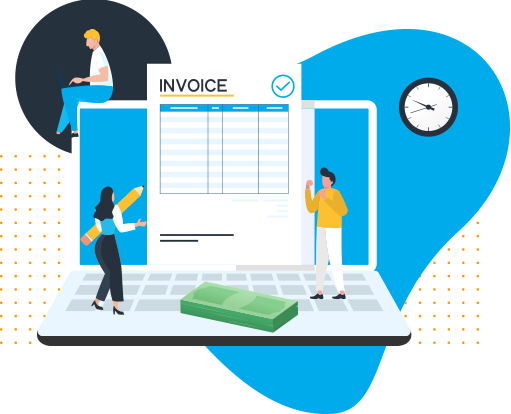The Procure-to-Pay (P2P) process remains an integral part of the supply chain. However, the P2P process chain has long been plagued by disruptions that introduce complications, stress, and process delays.
Research shows that 36 percent of Accounts Payable (AP) teams are constantly concerned with late payments due to delays, spending an average of 125 hours per week correcting the issues that cause them.
Contrary to common belief, the weak links causing these disruptions aren’t the people involved in the P2P process chain, but rather how the people are interacting with the process itself.
Let's expand on this by taking a closer look at the P2P process, its disruptors and challenges, and how to approach fixing the weak links.

What is Procure-to-Pay?
P2P is a commonly used supply chain term which encompasses the process of requesting (also known as requisitioning), ordering, receiving, and paying for goods and services from a supplier or vendor to support the business. The individual components of the process unify and integrate three subdivisions of the supply chain: purchasing, receiving, and AP.
The P2P Process
The four sequential stages can be visualized as interdependent links, with each component influencing the success of the next. As such, each of these four links has the potential to disrupt the entire P2P process chain.

Link 1: Requesting goods and services
Weakness: Because the requisitioner of a good or service is a casual user in the process and doesn’t understand the proper process to order what they require, they frequently submit requisitions with multiple errors and/or incomplete information. As a result, roughly 3.6 percent of manually entered requisitions contain errors.
Link 2: Ordering the goods and services
Weakness: Incomplete or error-riddled information from a requisition slows the ordering process as buyers must spend a significant amount of time to get the order correct. The purchasing department might not even recognize incomplete or inaccurate information due to automated processing that may bypass their access.
Link 3: Receiving
Weakness: While not all goods ordered require recording the goods receipt (GR), when it is required, it must be timely and accurate. When the staff that handles receiving does not understand requirements, they do not prioritize entry of the GR and may input data that is incomplete or in error.
Link 4: Accounts Payable
Weakness: AP teams can only pay invoices that match what is ordered and received. When invoice exceptions occur, AP staff is often required to make multiple calls and emails to determine their next action regarding paying off the invoice. Time-consuming inquiries from internal staff and vendors disrupts the P2P process chain, resulting in additional labor requirements and lost early payment discounts.
Common Challenges in the P2P Cycle
Weak links in the P2P process chain are associated with common challenges in the cycle, including:
- Compliance with current policies and procedures
- 50 percent of Procurement and AP teams receive inadequate training
- Confusion in finding assistance to submit service tickets
- Fraud prevention
- P2P staff frustration due to a lack of process optimization
- Difficulty improving and maintaining relationships with vendors
- Lack of trust among people in operations that order goods and services
Tips for Strengthening Weak Ties in the P2P Process
The P2P process chain can be strengthened with six methods designed to overcome common challenges and optimize outcomes.
- Provide in-the-moment access to current training materials, policies, and procedures.
- Improve productivity via intelligent optimization of prior automation investments in the P2P cycle.
- Leverage P2P innovations that are simple to implement and maintain.
- Improve digital communications, thereby reducing disruptions in staff’s daily P2P tasks.
- Implement an intelligent chat tool that improves vendor relationships by eliminating the need to chase down answers.
- Eliminate rework, fines, and fees due to noncompliance and excessive labor costs, thereby improving productivity and profit.

Supporting the P2P Process Chain with Intelligent Chatbots
Complex P2P processes have been the subject of extensive digital automation efforts at many companies utilizing SAP® Invoice Management Solution by Open Text™ or SAP® Ariba solution for their AP and procurement teams.
Even with the significant investment of time and money, many P2P tasks are disrupted due to lack of sufficient training and knowledge. In addition, many automated tasks have not been fully optimized.
Intelligent chat tools, such as Spotline’s VIMBots SAP® Invoice Management Solution by Open Text™ and Procurement Bot for SAP® Ariba, improve P2P process chain productivity and profit by eliminating fees and fines, excessive labor, and noncompliance.






